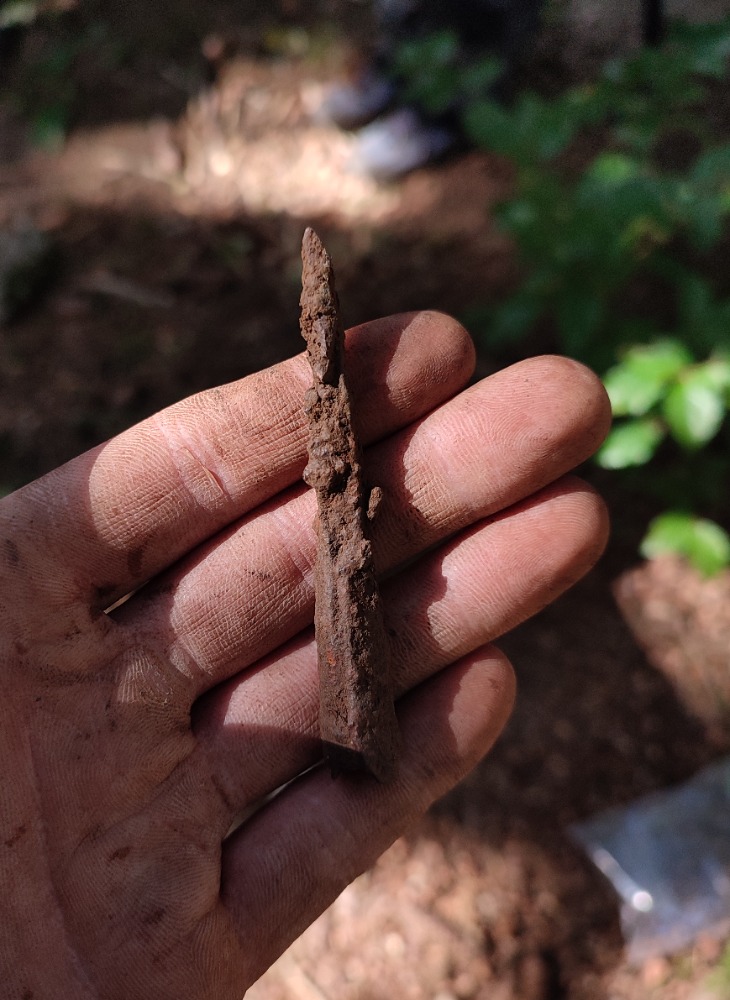Zajímavý. Pěkný článek.
Roman siege camp under the fortress of Ulaka
Categories: Finds and rescue research abroad , Nálezy nejenom s detektorem v západní Evropě
The last archaeological research of our Slovenian internship took place near Lake Cerknica in the south-west of the country. One of the two Roman siege camps, located 300 m northwest of the fort itself, was investigated.
History of the site
Ulaka was a 5 hectare hill fort, situated on top of the hill of the same name, between the villages of Podcerkev and Stari trg pri Loz in southwestern Slovenia.
The beginning of the settlement dates back to the Older Iron Age (Hallstatt), from this period there are known finds of bronze fibulae, ears ofThere is no reliable evidence of fortifications or the presence of a settlement. However, it is likely that later fortifications and Roman buildings have their foundations in this epoch. Settlement reaches its peak in the Younger Iron Age (Latenian) when fortifications and probably most of the semi-earthly structures are built.
In the following Roman period, at the end of the 1st century. century BC, in the period of the Gallic Wars of Iulius Caesar and the Illyrian Wars of Octavian Augustus, fortresses were built in close proximity to the2 Roman siege camps, which, together with finds of militaria, testify to frequent clashes between the indigenous inhabitants and the Romans. However, the Roman settlement does not cease and continues through late antiquity and into the Middle Ages.

Methodology and findings
Until recently, only one camp was known, located about 500 m south of the hillfort on Nadleški hrib. However, detector finds of militaria and lidar images have shown the existence of another camp, located about 300 m northwest of the hillfort.
Research was carried out using two hand-dug probes measuring 13x3 m and detector prospection of the surrounding area. The first probe sought to capture the continuation of the defensive wall interrupted on the lidar, while the second probe was located where a path was thought to lead to the hillfort.
The pegging of the probe was followed by the removal of vegetation and clearing of the area to the level of the rake, i.e. the first layer, and photographing the area from a drone and camera. The procedure was the same until the subsoil was reached, manually remove the layer, clear the area and soil profile, photograph, examine with the detector and repeat. Finally, the rock was cleared in detail, photographed, and the dip and direction of the layers and gradient measured with a geological compass.
The first probe was archaeologically quite poor. Only two Roman shoe nails were found. According to the design with four dots and a cross on the underside, it was of the Alesius D type, typical of Octavian and Caesar's time. The best find was discovered by a detector about 50 m from the probe, near a preserved part of the defensive rampart. It was a curved knife about 20 cm long, typical of the local indigenous population in the 1st century AD.
A second probe dug on the presumed path was more abundant. Fragments of prehistoric pottery, more shoe nails and even a Roman key and an iron ring were found in cracks between the stones. A Roman arrowhead, part of a 4th century AD iron clasp, a small bronze coin and perhaps a wax writing tablet scraper were also found nearby by the detectorist.

Roman shoe nails are distinguished by the motifs on their undersides. Type Alesia A which has no motifs, Alesia B which has only a cross on the underside, Alesia C withdots all around, Alesia D with a cross and dots, and Alesia E, which differs from type C by having a higher density of dots.

Wax scraper

Prehistoric pottery from the fissure between the stones in the second probe

Removal of vegetation and cleaning of the area of the first probe

View of the beginning of the second probe

Just before the finale

And its completion...


Alesia D type cloves

Arrow, initially mistaken for a bullet

An iron ring, probably with glass fragments on the platform.

A Roman key from the second probe
The article is included in categories:







